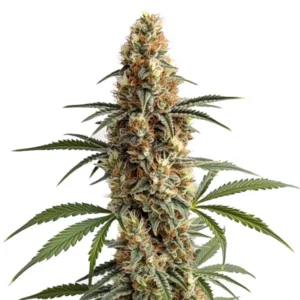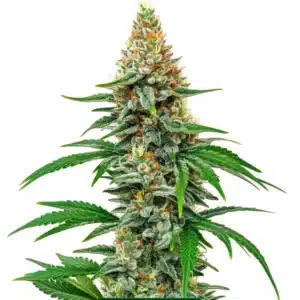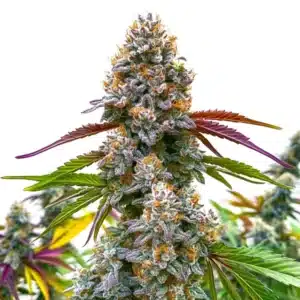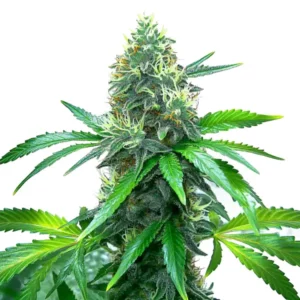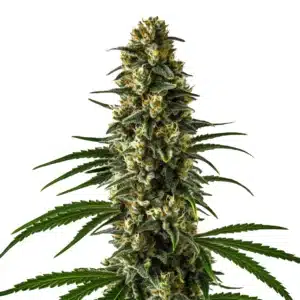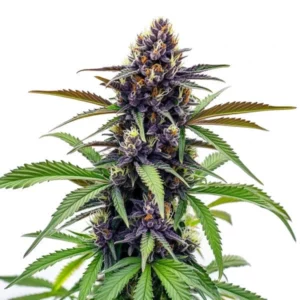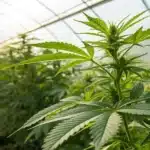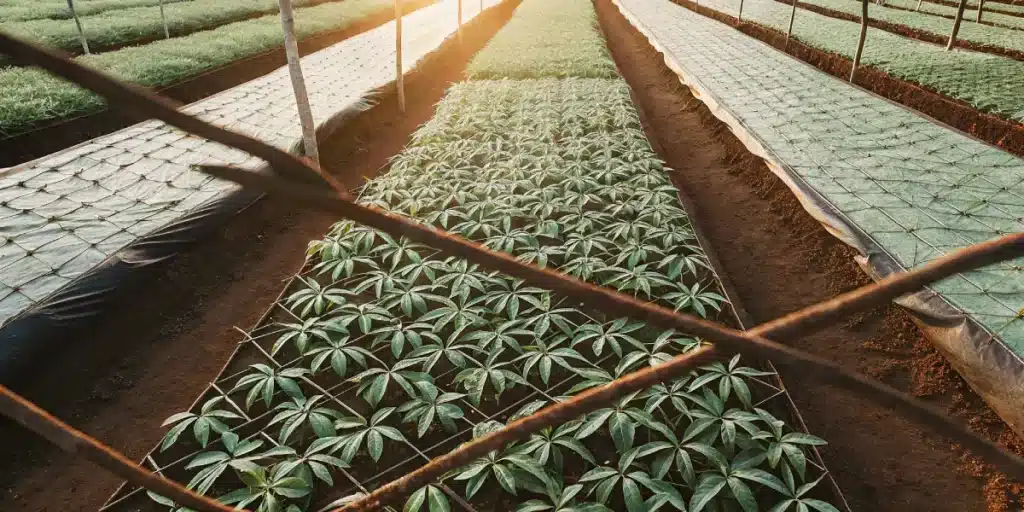
Influence of Laticifers on Pest Resistance
Ever wondered why some plants seem to shrug off pests? The secret might lie in laticifers. These are specialized cells or ducts found in many plants. Think of them as tiny factories producing latex, a milky fluid that can be sticky or toxic. The influence of laticifers on pest resistance is significant and is a natural defense mechanism.
Laticifers play a crucial role in plant pest resistance. They act as barriers against herbivores and insects. When a pest bites or damages a plant, laticifers release latex. This can trap or deter the pest, reducing the damage. It’s like a plant’s version of a security system, always on guard.
Recommended Strains
Z OG
|
|
THC | 16% - 20% (Medium) |
|
|
Type | Feminized |
|
|
Yield | Medium |
|
|
Phenotype | 75% Indica / 25% Sativa |
Mamba Negra
|
|
THC | 18% (Medium) |
|
|
Type | Feminized |
|
|
Yield | High |
|
|
Phenotype | 55% Indica / 45% Sativa |
For cannabis growers, knowing the influence of laticifers on pest resistance can be a game changer. Certain strains have more active laticifers, making them less appealing to pests. This means fewer pesticides and healthier plants. Recognizing strains like those available on Blimburn Seeds that have strong natural defenses can make growing easier and more productive.
Laticifers Role in Plant Pest Resistance
Plants with robust laticifers have a distinct advantage. These structures are part of a plant’s anatomy and vary in presence and activity among different species. They contribute significantly to a plant’s ability to fend off unwanted visitors.
For example, when a pest attacks, the plant’s response is almost immediate. The laticifers release their contents, which can be sticky or even contain compounds that are toxic to pests. This immediate reaction not only deters the pest but can also prevent further attacks. The laticifers’ role in plant pest resistance is thus both proactive and reactive.
Furthermore, laticifers can adapt to the specific threats that a plant faces. In regions with high pest activity, plants may develop more active laticifers, creating a dynamic defense system. This adaptability is essential for the survival and success of many plant species in diverse environments.
In addition to their defensive capabilities, laticifers play a role in healing and protecting plant tissues. When a plant is damaged, the latex can seal wounds, preventing the entry of pathogens and reducing the risk of infections. This dual function highlights the importance of laticifers in maintaining plant health and resilience over time.
- Laticifers act as a physical barrier.
- They release deterrent substances.
- They can trap pests using sticky latex.
How Laticifers Affect Pest Deterrence
The impact of laticifers on insect resistance is quite fascinating. When pests, like caterpillars or aphids, attempt to feed on a plant, the latex can glue their mouthparts shut. This not only stops them in their tracks but also sends a strong message to other pests.
Take, for instance, the cannabis strain Critical Daddy Purple available at Blimburn Seeds. This strain has shown remarkable resilience to pests, partly due to its active laticifers. Growers have reported fewer issues with common pests, making it a favorite among those looking for robust plants.
Another fascinating aspect of how laticifers affect pest deterrence is their ability to communicate with other plants. Some studies suggest that when a plant releases latex, it can signal neighboring plants to ramp up their defensive mechanisms. This collective response highlights the sophisticated nature of plant defense systems.
The influence of laticifers on pest resistance also extends to influencing pest behavior. Pests that encounter plants with active laticifers may learn to avoid them in the future, reducing the likelihood of repeated attacks. Over time, this learned avoidance can lead to a significant decrease in pest populations in the area.
Promos & Deals
Impact of Laticifers on Insect Resistance
Laticifers contribute to pest defense mechanisms by offering both a first line and a backup plan. The immediate release of latex can deter initial attacks, while the continued presence of these substances can prevent future ones. This is particularly important for long-term plant health and yield.
Consider the Zkittlez strain from Blimburn Seeds. Known for its vibrant growth and resilience, part of its hardiness comes from efficient laticifers. Not only does this strain produce exciting flavors, but it also stands strong against pests, thanks to its natural defenses.
The impact of laticifers on insect resistance can also enhance biodiversity in agricultural systems. By reducing the need for chemical pesticides, laticifers help maintain a balanced ecosystem where beneficial insects and pollinators can thrive. This ecological balance is crucial for sustaining healthy crop production.
Moreover, the presence of active laticifers can lead to increased genetic diversity within plant populations. As plants with effective defense mechanisms are more likely to survive and reproduce, their advantageous traits are passed on to future generations, promoting the evolution of pest-resistant species.
- Immediate pest deterrence through latex release.
- Long-term resistance through ongoing deterrent presence.
- Reduction in pesticide use, promoting healthier growth.

Laticifers Contribution to Pest Defense Mechanisms
Laticifers influence on herbivore resistance is particularly significant. Herbivores, which include larger pests like deer, can be discouraged by the presence of latex. The taste and texture are often unpalatable, leading them to seek easier meals elsewhere.
The strain Mamba Negra from Blimburn Seeds illustrates this well. This strain thrives with minimal intervention, thanks to its effective laticifer system. Growers can enjoy robust growth and a great yield without constant worry about pest invasions.
In addition to deterring herbivores, laticifers contribute to pest defense mechanisms by promoting a healthier plant environment. The latex can inhibit the growth of harmful fungi and bacteria, reducing the likelihood of diseases that often accompany pest infestations.
Laticifers’ influence on herbivore resistance is not just about defense but also about creating a hospitable environment for beneficial organisms. By limiting pest populations, laticifers help ensure that plants can allocate resources towards growth and reproduction rather than constant defense, resulting in more vigorous and productive plants.
This natural deterrence is a win-win. Plants are less stressed and can focus energy on growth and reproduction. Growers, in turn, benefit from reduced need for chemical inputs. This not only saves money but also results in a more organic product.
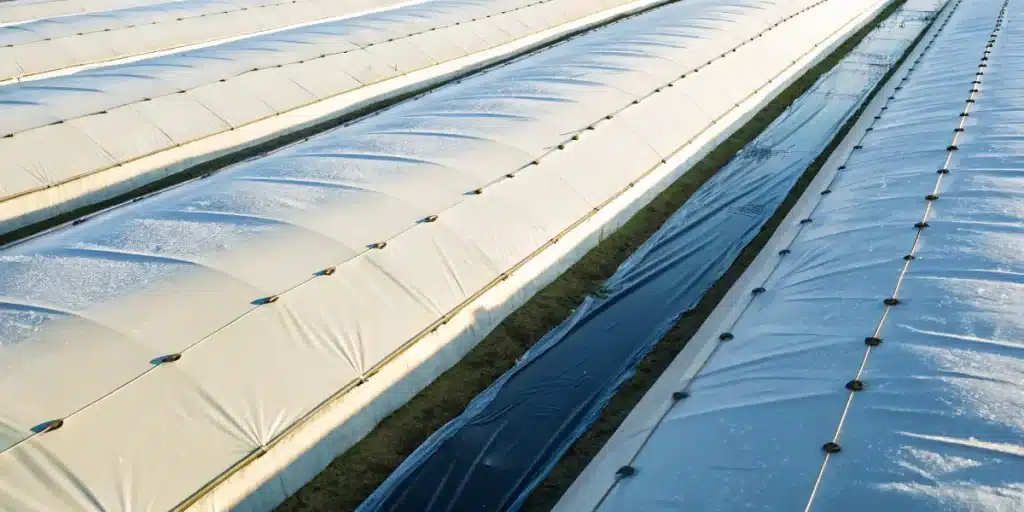
FAQs
What are laticifers?
Laticifers are specialized cells or ducts in plants that produce latex. Latex is a milky fluid that can contain a mix of compounds, some of which are sticky or toxic. In many plants, laticifers act as a defense mechanism, protecting the plant from pests and diseases.
In practical terms, if you’ve ever seen a plant ooze a white, sticky substance when damaged, you’re likely looking at latex from its laticifers. This natural protection helps reduce pest damage, making it an important feature for growers to consider when selecting plant varieties.
The influence of laticifers on pest resistance is not limited to their physical properties. The chemical composition of the latex can vary, providing a tailored defense against specific pests. This chemical diversity ensures that laticifers remain an effective line of defense across different environmental conditions and pest challenges.
Knowing the function of laticifers in plant health is essential for breeding and selecting crop varieties. By choosing plants with active laticifers, growers can enhance their resilience against pests, leading to more sustainable and productive agricultural practices.
How do laticifers help in pest resistance?
Laticifers help in pest resistance by releasing latex when the plant is damaged. This latex can trap pests, making it difficult for them to continue feeding. Additionally, the compounds in the latex can be deterrent or toxic to pests, reducing their ability to harm the plant.
For growers, this means less reliance on chemical pesticides. Plants with active laticifers can naturally fend off many common pests, leading to healthier growth and better yields. It’s a natural line of defense that can be incredibly effective.
Laticifers role in plant pest resistance is further supported by their ability to regenerate quickly after damage. This regenerative capacity ensures that plants can maintain their defensive capabilities even after multiple pest attacks, enhancing their long-term survival and productivity.
The influence of laticifers on pest resistance also extends to protecting plant’s vital resources. By preventing pest damage, laticifers help conserve energy and nutrients that would otherwise be lost, allowing plants to invest more in growth and reproduction.
Which cannabis strains have strong laticifer activity?
Some cannabis strains are known for their strong laticifer activity. These include Critical Daddy Purple, Zkittlez, and Mamba Negra from Blimburn Seeds. These strains are not only popular for their effects and flavors but also for their resilience against pests.
Choosing strains with active laticifers can make a significant difference in your growing experience. With less pest pressure, you can enjoy a more relaxed growing season and focus on maximizing your yield and quality.
Knowing how laticifers affect pest deterrence in different strains can guide growers in making informed decisions. By selecting strains with strong laticifer activity, growers can optimize their cultivation processes, reducing the need for chemical interventions and promoting sustainable practices.
Incorporating laticifer-rich strains into breeding programs can also enhance the genetic diversity and resilience of cannabis varieties. This approach not only improves pest resistance but also contributes to the overall health and vigor of the plants, ensuring their success in various growing environments.
Can laticifers reduce the need for pesticides?
Yes, laticifers can significantly reduce the need for pesticides. By naturally deterring or trapping pests, plants with active laticifers can maintain health without the constant application of chemical treatments. This not only saves time and money but also contributes to a more sustainable growing practice.
For growers interested in organic methods, selecting strains with strong laticifer activity is a smart choice. You’ll likely find that your plants remain healthier and your yields improve, all while reducing your environmental footprint.
The reduction in pesticide use due to the influence of laticifers on pest resistance also benefits the broader ecosystem. By minimizing chemical inputs, growers contribute to healthier soil, water, and air quality, supporting biodiversity and ecological balance.
Moreover, the economic advantages of relying on natural pest resistance should not be overlooked. Reduced pesticide costs and improved plant health translate to higher profits and more sustainable operations, making laticifers an invaluable asset for modern agriculture.
Are there any downsides to laticifers in plants?
While laticifers offer many benefits, they can sometimes pose challenges. The sticky nature of latex can make handling plants messy. Also, in rare cases, some people may have allergic reactions to latex, so it’s important to handle plants with care.
Despite these minor issues, the benefits of laticifers far outweigh the downsides. Their contribution to pest resistance and plant health makes them an invaluable asset for growers, helping to ensure robust, productive plants with minimal intervention.
In some cases, the influence of laticifers on pest resistance may lead to increased maintenance requirements. For example, growers may need to clean equipment more frequently to prevent latex buildup, ensuring that machinery operates efficiently.
However, these challenges are generally manageable and do not detract from the overall advantages of laticifers. By adopting best practices and knowing the function of laticifers in plant health, growers can effectively harness their benefits while minimizing potential drawbacks.



